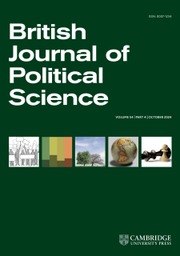Perceptions of Ethnic Minority Discrimination: Statistics and Stories Move Majorities
In the context of ethnic discrimination, narrative evidence can be as compelling as empirical data. A recent publication by Kim Mannemar Sønderskov in collaboration with Peter Thisted Dinesen and Clara Vandeweerdt (University of Copenhagen), and demonstrates that a single account of a Lebanese teenager being rejected for a job can be equally persuasive as a comprehensive audit study in illustrating the prevalence of discriminatory practices.
British Journal of Political Science , Volume 55 , 2025 , e116
Abstract
Disadvantaged minority groups can gain support for their cause by convincing majority members of their experienced adversity. We theorize and empirically test the efficacy of different types of evidence, varying in character (statistical versus personal) and ambiguity (manifest versus ambiguous), vis-à-vis raising majority members’ awareness of ethnic minority discrimination. Reflecting the combination of these two dimensions, we develop four treatments based on real evidence/stories and test several pre-registered hypotheses regarding their efficacy in two survey-experimental studies conducted in Denmark. We find that manifest types of evidence – from an audit study and a personal story exhibiting explicit discrimination – are the most effective in raising majority members’ awareness of ethnic minority discrimination. Further, the effect of the personal story extends to increased support for anti-discrimination policies and higher donations to an immigrant NGO, highlighting how personal stories can increase majorities’ awareness of and willingness to act on the adversity experienced by minorities.

